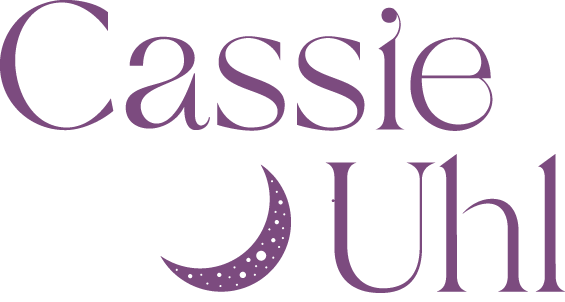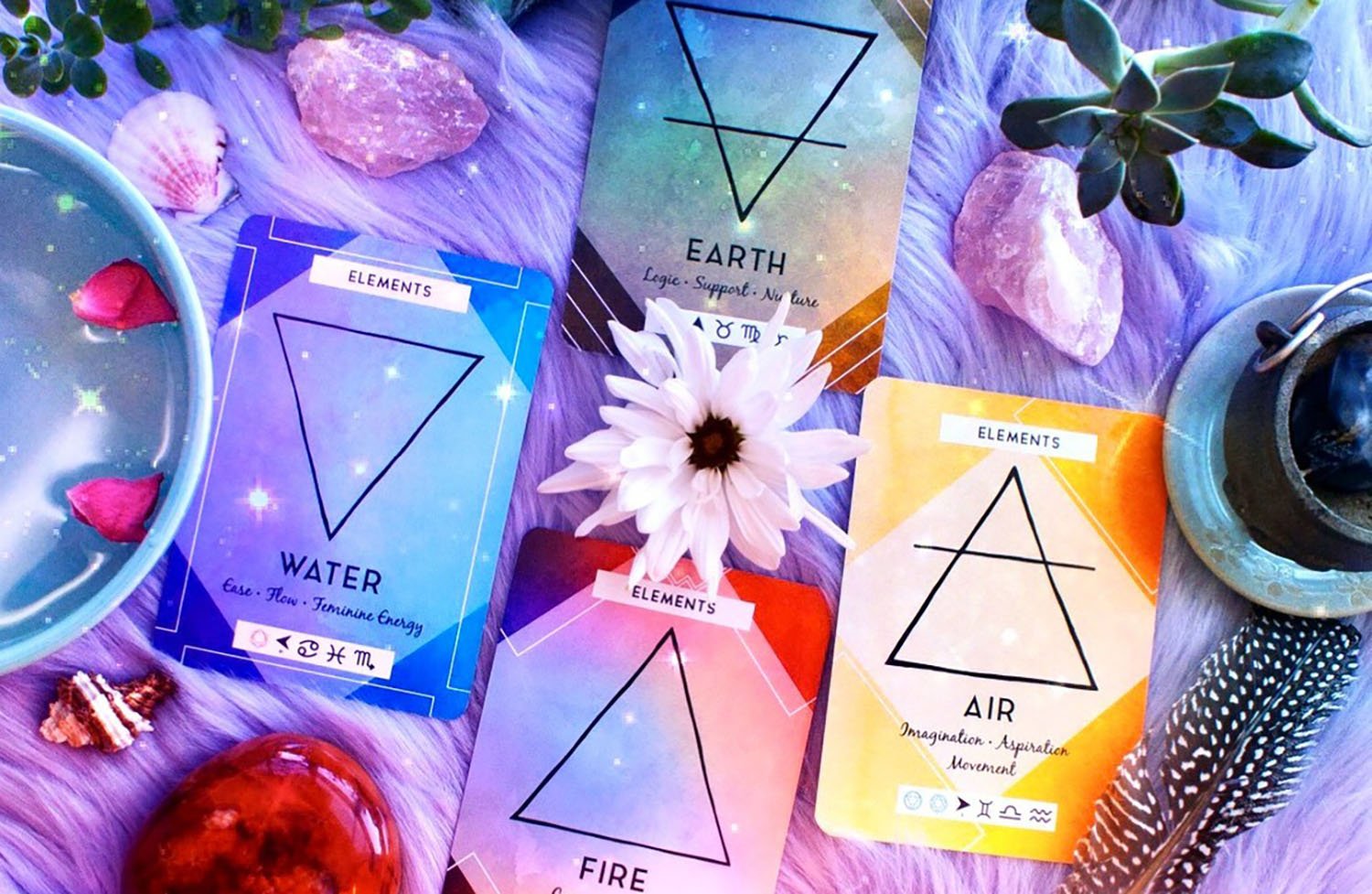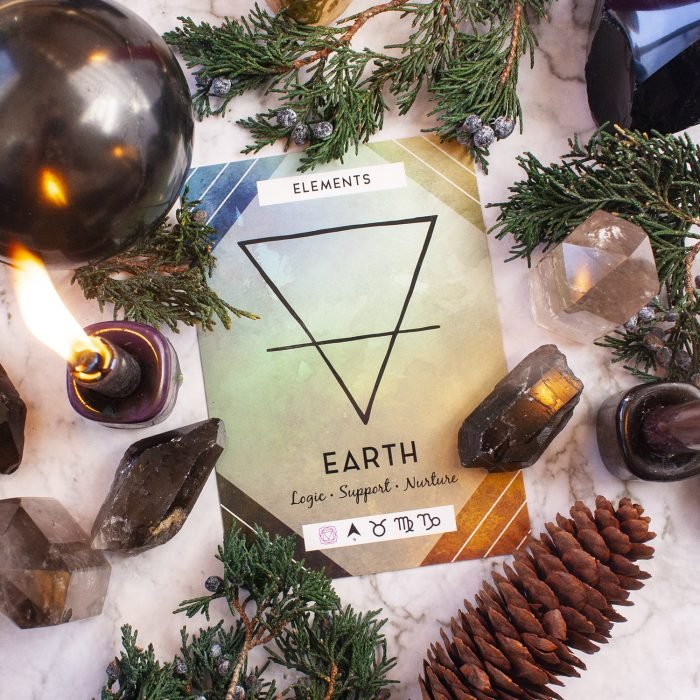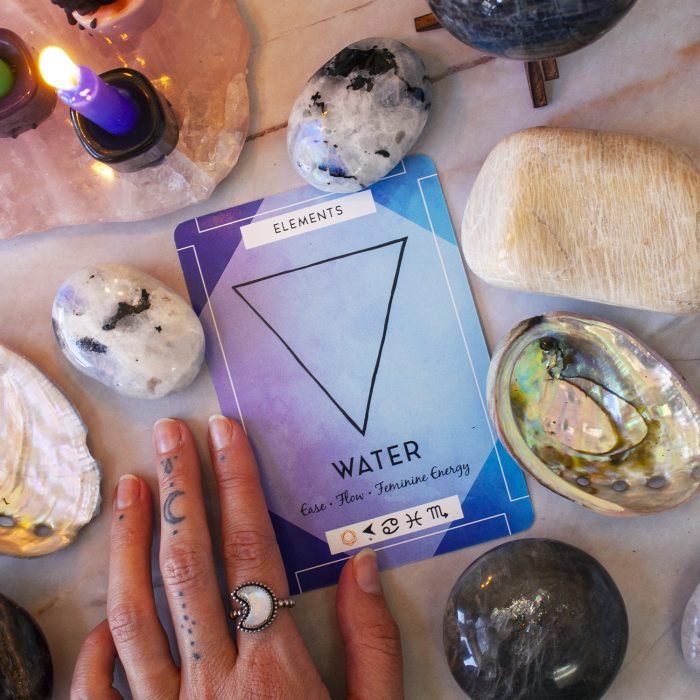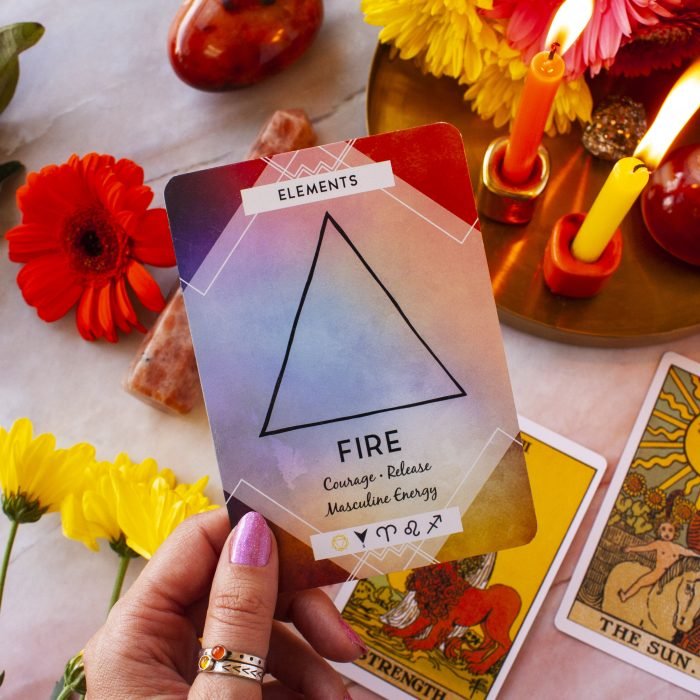Understanding the 4 Elements & Using them to Shift Your Energy
The four elements, earth, air, fire, and water, are physical materials and energies that comprise the world around us. If you don't already work with the four elements in your practice, you've likely heard of them because they're rather tricky to avoid as so many spiritual practices refer to them in some way.
The four elements, earth, air, fire, and water, are physical materials and energies that comprise the world around us. If you don't already work with the four elements in your practice, you've likely heard of them because they're rather tricky to avoid as so many spiritual practices refer to them in some way.
There are countless ways to deepen your relationship with the four elements and bring them into your practice. In this post, you'll learn a bit about the history of the four elements, common correspondences for them, how to work with them physically and energetically, calling them in for protection, and using them in your home or on your altar.
I want to quickly touch on the element of Spirit because I'm sure some of you may be wondering if I'll discuss it as well! I will touch on the fifth element, often referred to as Spirit, aether, or Akasha, especially in the history section. However, I will save a deeper dive into the fifth element of Spirit for a post of its own. Much of this share will be dedicated to the four elements as I see them as slightly separate from Spirit and very foundational.
Listen to this post on my podcast, Rooting into Wholeness here.
A brief view of history and the four elements
As usual, I do like to cover some history. I think it's an essential part of having a complete view of different spiritual practices. That said, I always research with an understanding that this history is rarely the whole picture, but rather one piece. This is especially true when you're reconstructing a spiritual path that's not clearly recorded, was attempted to be eradicated, or if you hold multiple cultural heritages (like many of us do!).
The deeper I dive into my spiritual roots, the clearer it becomes that building a meaningful practice combines historical facts, inference, oral traditions passed down, and personal experience. Each of these pieces, in my opinion, serves a useful purpose while building a spiritual practice. Here's a very brief history of some of the earliest mentions of the four elements.
One of the first written examples of the four elements comes from the Greek philosopher Empedocles in the fifth century BCE. Empedocles refers to them as the four roots and assigns each element or "root" to a Greek God or Goddess as follows, Hera with earth, Zeus with air, Aidoneus with fire, and Nestis with water (though there is some debate over this, this is the consensus.) The Gods and Goddesses Empedocles associated with each element is less important (to me) than the fact that he did associate them with Gods and Goddesses. Because Empedocles gave these elements spiritual significance by corresponding each with a God or Goddess, it indicates that he viewed them as having a deeper meaning than mere elements on a periodic table.
In Buddhist practices, we see the first written mention of the four (sometimes five) elements in the Pali Canon in 29 BCE. However, these were recorded based on oral history that had been previously passed down for possibly hundreds of years. We also have Vedic texts that speak to the five elements, or Pancha Bhootas, in Hinduism. These were first recorded in the Taittirīya Upanishad is unknown, but some think it could have been even earlier than Empedocles and predate Buddhist practices at around 500-600 BCE. If you've studied practices that have become more commonplace in the West, like Yoga or Ayurveda, these are the elements referred to in these practices.
In all of these cases, I'm simply talking about the written records. I believe, as do others, that the four elements have been worked with and used by many pagan and indigenous practices long before the written evidence was created.
As far as Celtic practices, the four elements were likely not a part of their practice. The number three was sacred to the Celts, so the elements they honored were the land, sea, and sky, or earth, water, and air. In witchcraft and other earth-based practices, the four elements became much more commonplace with the introduction of Wicca in the 1970s, which relies heavily on the four elements (sometimes five.)
Explore The Soul Discovery Journal for more on the elements
There's certainly reference to working with the four elements in pagan, shamanic, and indigenous practices worldwide. However, many of these practices have been passed down orally.
Elen Sentier teaches and practices British Shamanism, or the "old ways," as she calls it, shares about the four elements concerning the world tree. She explains this below, in this excerpt from her book, Following the Deer Trods.
"The World Tree holds the vertical axis on which the three worlds spin (Upperworld, Middleworld, and Lowerworld.) The vertical axis is like the warp-threads in weaving; these are threads on which the pattern is woven. Middleworld holds the horizontal axis of the four elements. These are the weft threads that weave the pattern of life.
The four elements - earth, air, fire, water - are the weft-threads.
These two, the warp and the weft, are the basis of the duality which enables life to be."
This explanation from Elen Sentier is hardly the only reference to the four elements in earth-based spiritual practices. I'm confident that wherever your cultural roots lie, you will be able to find reference to three, four, or five elements there as well. This is where inference and personal experience come in. When we examine the written history, we have one piece of the puzzle; however, when we explore the personal experiences from those who've lived and experienced lines of knowledge passed down, we receive a different part of the puzzle. For example, even though I walk a Celtic and British path primarily, I choose to work with the four elements because they have been an integral part of my practice, through my introduction to them with Yogic philosophy but in my witchcraft and shamanic work as well.
As always, work with what speaks to you, your experiences, and your heritage. Perhaps you prefer to work with three, four, or five elements. There are seeds of truth and wisdom in all of them.
For this post, I will be focusing on the four elements through my unique lens of witchcraft and British earth-based spiritual practices. However, my introduction to the four elements was through my Yoga teacher training in 2012, which will color my unique lens.
The elements and correspondences
Each element has a unique essence, which carries both positive and shadow attributes. No element is positive or negative, but rather a conglomerate of different energies. For example, we can see the soft and gentle flame of a candle or a roaring forest fire. Each has value and purpose. Each element also relates to a host of other energies and objects, called correspondences. Correspondences are energies that match and play well together.
Once you understand how the four elements relate to other energies, it creates a strong foundation for understanding magical correspondences on a broader level. Explore an in depth exploration of the four directions and elements by journeying to them here.
Keep in mind. These are my beliefs based on my research and experiences. If something I share about an element doesn't fit into your practice or even goes directly against your practice, no worries, just leave it. As we already discussed in the history section, spiritual practices using the four elements span the globe, so differing opinions are bound to come about.
Air card from The Ritual Deck.
Let's go through each element and discuss some of the most common meanings and correspondences for them.
Air relates to intellect, ideas, inspiration, and the mind. It corresponds with the East, the color yellow, the suit of swords in the tarot, the throat and heart space, wind, sound, smoke, smells, feathers, birds, and unseeable forces that influence our minds. In astrology, the three air signs are Gemini, Libra, and Aquarius.
Fire relates to transformation, action, power, and the ego. It corresponds with the South, the color red, the suit of wands in the tarot, the solar plexus area, flames, heat, candles, the phoenix, dance, and the destructive forces that ultimately encourage new growth. In astrology, the three fire signs are Aries, Leo, and Sagittarius.
Water relates to emotions, intuition, feelings, and the subconscious mind. It corresponds with the West, the color blue, the suit of cups in the tarot, the sacral area, springs, the ocean, tears, shells, aquatic animals, things in a liquid state like melting wax, and the forces that move us to feel so we can cleanse and heal. In astrology, the three water signs are Cancer, Scorpio, and Pisces.
Earth relates to safety, protection, the material world, and the physical body. It corresponds with the North, the color green, the root space, dirt, trees, rocks, food, bones, ancestral wisdom, and the physical energies that support and sustain us. In astrology, the three earth signs are Taurus, Virgo, and Capricorn.
I discuss this a lot in my Tarot Correspondences course and my new book, Understanding Tarot. As you can see, once you have a firm understanding of each of the elements, it will help you better understand Astrology, Tarot, and a host of other magickal practices.
This is a peek into each element. We'll go deeper into each of these, their positive and shadow sides, different tools to connect with them, and wisdom from each in the following posts:
Let's move on to some ways to begin working with the four elements collectively.
Connecting with the elements in the physical and energy body
As Elen Sentier stated in the excerpt from her book above, the four elements are the "weft threads that weave the pattern of life." The four elements affect each of us physically and energetically here in physical form. We can feel them in the body and connect with them in the subtle body.
If you want to form a deeper relationship with the four elements, this is where I'd invite you to begin, connecting with them within your body. There are many ways to start doing this, and it will be an ongoing practice because our relationship with the elements is not fixed and is constantly evolving and growing.
Earth card from The Ritual Deck.
Here are three ways I've learned to deepen my relationship with the four elements.
1. Notice the elements in the natural world and when you do, notice how they make you feel. For example, When I go on my regular walking meditations outside, this is one way that I tune in to the environment and the elements. I notice how the sun's heat feels on my skin. I notice the wind and any sounds it may be creating in the trees. I notice any water (which here in the desert is usually just the dew on the grass leftover from sprinklers). I notice the supportive earth beneath my feet. You can even imagine this in your mind right now. What feelings come up within you when you think about a stream vs. a fire? Each brings a different energy that is palpable within my mind's eye.
2. Notice how the four elements come up within your physical body. When you experience different sensations in your body, can you associate them with a specific element? For example, I'm someone who becomes ungrounded and anxious easily. I know what anxiety and dysregulation in my nervous system feel like. My mind races, I get a tingling sensation in my neck, my hands and feet sometimes get tingly, and my breath becomes shorter and moves to the chest. These sensations can come up due to an event outside of me or me merely not making time to care for my body, mind, and Spirit.
For me, I recognize this as an overabundance of air. Air corresponds with the thinking mind, intellect, and ideas. When I'm stuck in my head, and it's literally pulling me out of my body, I know I need to ground and bring in more earth. If I find myself in this place, I make sure to do things that bring in more of the earth element, like getting outside and feeling the support of the earth below my feet, or perhaps I meditate and visualize a connection to the earth. This is why my regular walking meditation practice is so imperative for me. Of course, this is not a cure-all nor an excuse to not seek out professional help. I've also relied on therapy and medication for my anxiety at different times in my life, but I find that a daily practice such as this helps support me in different ways.
Can you bring to mind some common emotions or sensations in your body? Perhaps you lean towards too much earth and often feel sluggish, tired, or heavy? Or, too much water, and you find yourself overly emotional and often in a puddle of tears. Or too much fire, which could feel like a need to be forceful or constantly doing. As I mentioned, each element is neither good nor bad. They each have both positive and shadow sides to work with and recognize. It's in finding a balance between them that we can move towards more equilibrium.
Water card from The Ritual Deck.
3. There are also ways to work with the elements on an energetic level. This is great if you don't have access to elements you want to work with or do some healing work during meditation or journeying.
I rely heavily on the four elements while working alongside clients for energy work. I see each element as an ally or helping Spirit to aid in giving each client what they need for healing. Of course, there are so many ways to do this for yourself as well. Here are some ways that I've learned over the years to work with each element energetically.
For earth, one of my favorite grounding techniques is to imagine that beam of energy or even a root coming from the base of your spine and connecting with the energy of earth (you can do this outside for extra potent earth energy!) In energy work, I will often pull in earth and mud (energetically within my altered state of performing energy work) to place on top of people if their energy feels dysregulated or "buzzy."
For air, I visualize air blowing around me and through my body. When performing energy work, I will sometimes blow air into certain parts of the body to clear or bring in more air. I also work with feathers similarly.
For water, I love to visit and visualize sacred springs and work with the water for healing for myself or with my clients. Spring waters are one of the most common tools, next to earth, that I pour into parts of people's bodies to bring cleansing and healing.
For fire, I love dance, either physically or even visualizing it. I'll imagine certain issues or things being burned up within me. I'm cautious with fire for energy work as it's so intense, so it's something I don't often use unless someone is very low energy.
I encourage you to explore your relationship with each element through meditation or journey work to find ways to work with them that work for you.
I hope this gives you some guidance to begin working with the elements both physically and energetically. As I mentioned, I will dedicate a post to each of these elements to explore each one on a deeper level.
Spellwork and Protection with the Elements
The four elements are often used in both spellwork and protection. Let's discuss some ways to work with them in these ways. As we discussed, each element carries specific energy, and you can call upon those energies through the elements to better facilitate particular outcomes in spellwork.
Fire card from The Ritual Deck.
Here are examples for each element. If you are conducting a spell to bring in mental clarity, the element of air would be appropriate, and you may want to incorporate feathers or plants that blow in the wind to honor air. Fire is your friend, and candle spellwork would be ideal if you are conducting a spell to energize you or facilitate a transformation. If you are performing spellwork to connect with your intuitive mind, bring some water into your spell by implementing water, shells, or aquatic materials. If you're working on manifesting something physical into your life, call upon the element of earth by working with stones, crystals, or earth objects to help bring about material possession.
There are so many different items that correspond with each element, so you truly have a bounty of various tools when it comes to representing the elements in your spellwork. You could rely on different tarot cards, plants, crystals, Gods, Goddesses, etc., to bring in an element. If you're learning the correspondences for the elements, I designed my oracle card deck, The Ritual Deck, to be a learning tool specifically for this! Each card has a correspondence bar at the bottom that shows the corresponding element for each card/symbol. Beyond this deck, I also love "Llewellyn's Complete Correspondence Guide." It's a big book but one I think any witch or person who dabbles in spellwork should have!
When it comes to protection, I love working with the four elements! If you've ever had a session with me, you know that I begin each session with some drumming and invoke each of the four elements to create a sacred container for our work. I also do this mentally whenever I journey. In Wicca, this is often referred to as "Calling the Quarters." But, you certainly do not need to consider yourself a Wiccan to work with the elements in this way. Working with the elements in this way for protection is something we see in many earth-based and shamanic practices.
To work with the elements in this way for protection, you can call in each element aloud or in your mind. It's common to start at the East with air, and move clockwise around the directions, Fire of the South, Water of the West, and Earth of the North. I like to visualize each element swooping in to create a barrier around me as I work. You could also place a physical representation of each element around you in this same order.
In witchcraft, this is often referred to as casting a circle. However, there are many other ways to cast a circle, and you do not have to consider yourself a witch to use the elements in this way. The next time you feel like you need extra protection for spellwork, meditating, journeying, etc. I encourage you to try either of these techniques and notice how you feel.
Using the four elements on altars and living spaces
One of the most common ways people work the elements into their practice is through an altar. This is another tool that we can see across cultures and traditions. It's a widespread practice to represent all four elements present on an altar for balance, protection and to show gratitude for each of the elements. We've touched on this a bit, but I'll share here some suggestions for ways to represent each element on your altar.
Air: Feathers, images or sculptures of birds or flying insects, smoke, fans, herbs or plants that blow in the wind, any cards from the suit of swords in the tarot, the color yellow, labradorite, amethyst, musical instruments like singing bowls, chimes, rattles, drums, etc.
Fire: Candles, burning charcoal, burning herbs, incense, lava rocks, obsidian, yellow jasper, any cards from the suit of wands in the tarot, a wand, phallic symbols, symbols, or images of the God (could be any God you're comfortable with.)
Water: water, shells, images or sculptures of any aquatic animals, opal, moonstone, aquamarine, any cards from the suit of cups in the tarot, chalices, cauldrons, symbols of the Goddess (could be any Goddess you're comfortable with.)
Earth: stones, wood, plant material, living plants, herbs, symbols or sculptures of trees, petrified wood, the Greenman, Gaia (or any earth God or Goddess in your practice), any card from the suit of pentacles in the tarot, money, different metals.
Some unique items can serve as all four (or five) of the elements.
Smoke cleansing with a shell or chalice-shaped bowl can serve as a representation of all four elements. The shell or chalice shape represents water, the plant material represents earth, the burning herbs represent fire, and the smoke represents air.
Candles are another one. The flame represents fire, the smoke represents air, the wick represents earth, and the melting wax represents water. I'm sure there are others that I'm not aware of or familiar with!
You can modify these same suggestions for your altar to help balance the energy of your living space. For example, if you're going through a transition as a family unit, you may find it helpful to bring in some grounding elements to your home to offer you and your family a greater sense of safety and support. Alternatively, suppose you recently had a visitor in your home who left some unwelcome residual energy. In that case, you might benefit from bringing more of the air element through smoke cleansing, or simply opening the windows, to bring in an energetic fresh breeze, if you will.
As you can see, there are so many meaningful and important ways to work with the four elements in your spiritual practice!
I'd like to note one last thing, especially when discussing using items from the natural world, both physically and energetically, is to be reciprocal with these elemental energies. When you call on them, thank them for their assistance by taking a few quiet breaths and offering your thanks and gratitude. If you take items from nature, consider leaving an offering as a token of your appreciation. This can be simple, but it's important and can genuinely help you form a much deeper relationship with the elements and nature.
If you enjoyed this share, I invite you to share it with someone else who may enjoy it as well. I'm excited to do deep dives into each of the elements soon!
In love and gratitude, Cassie
